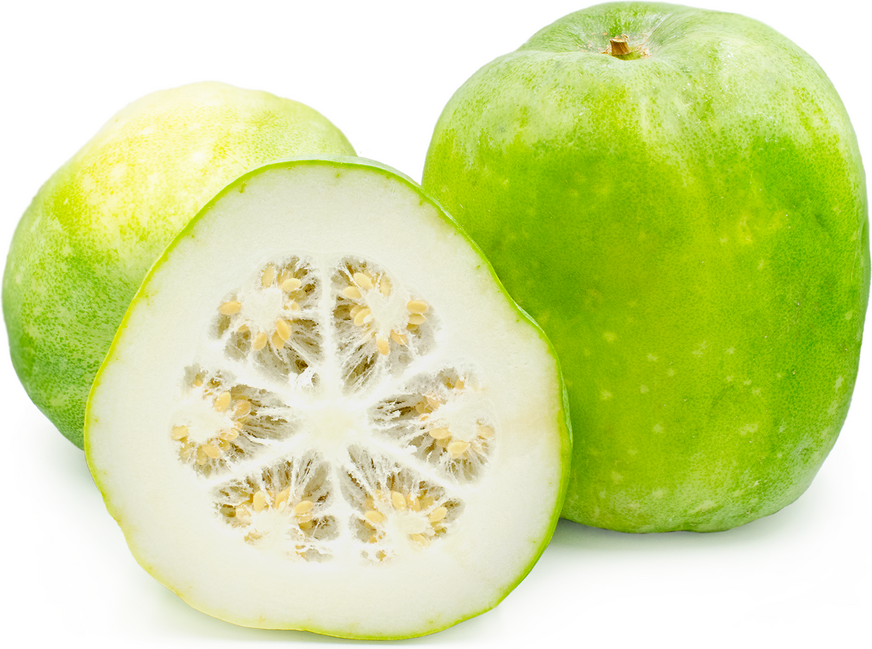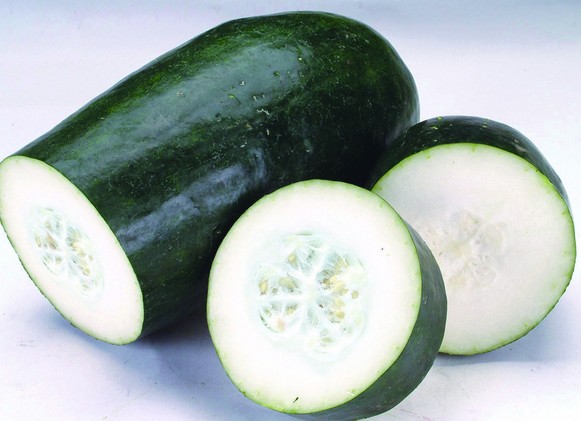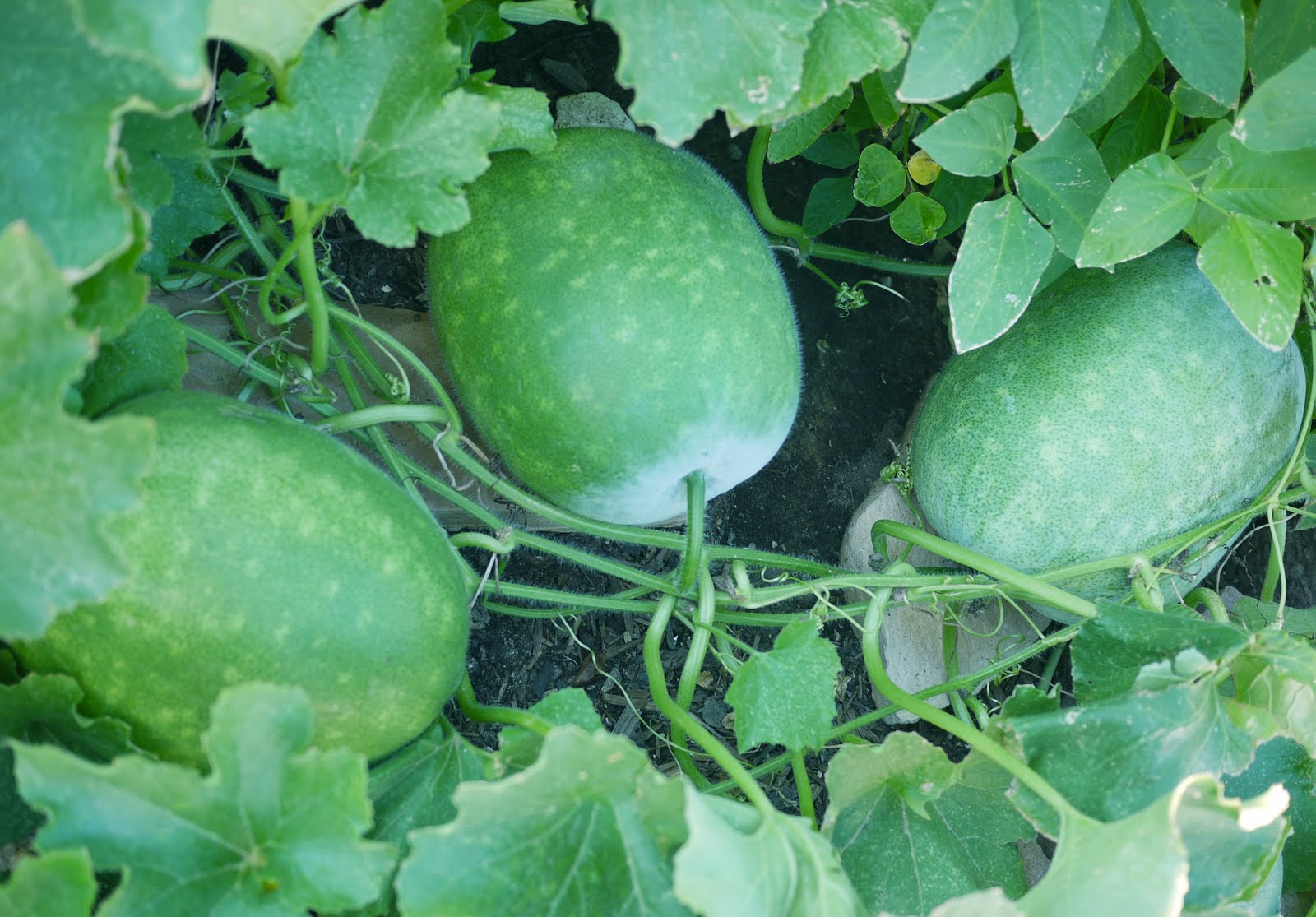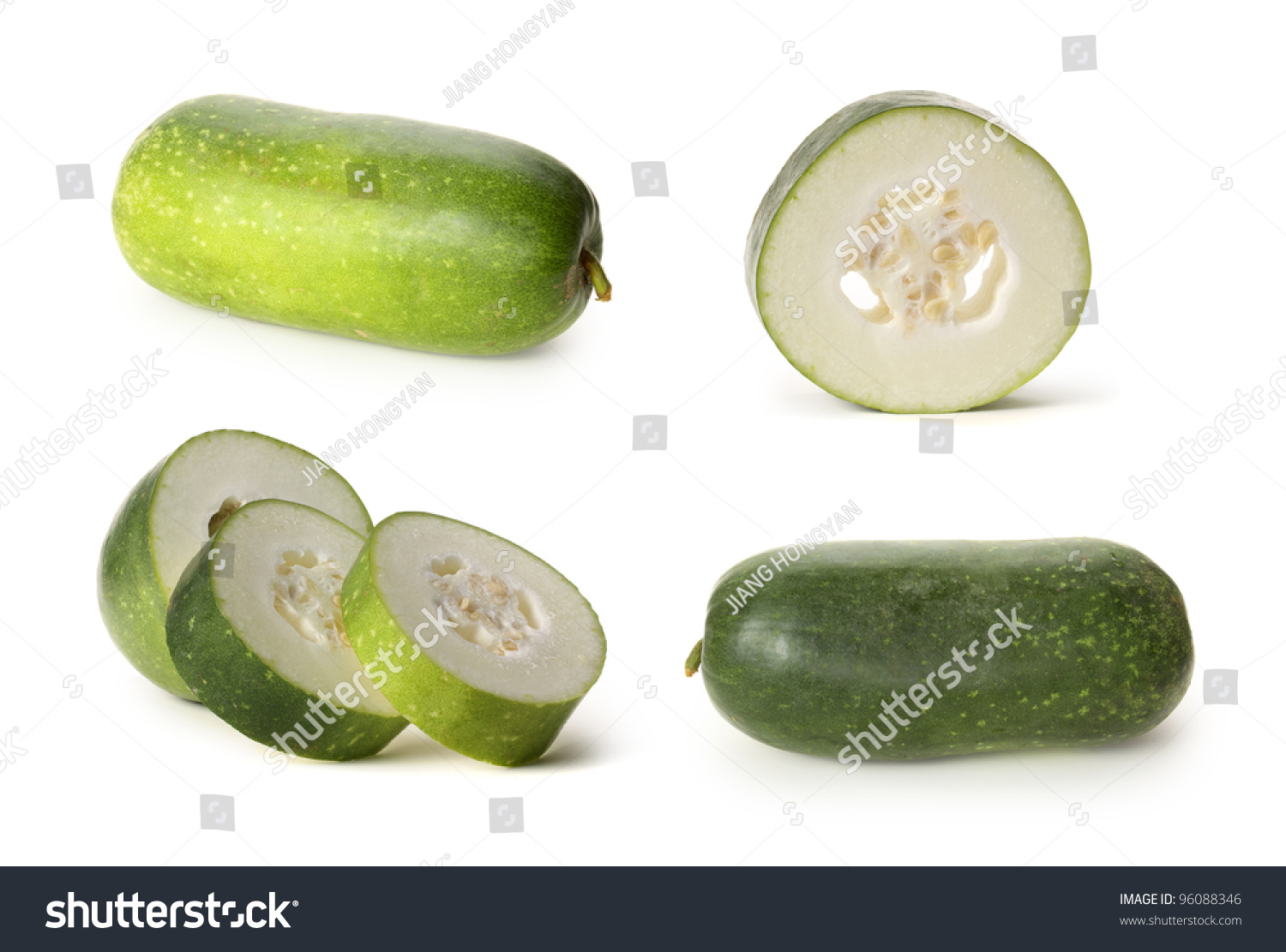Winter melon
Wax gourd ( Benincasa hispida )
The wax gourd ( Benincasa hispida ), also called winter melon, is a plant belonging to the gourd family ( Cucurbitaceae ), whose fruits are used as a vegetable in Asia. It is the only species of the genus Benincasa.
Features
It makes long, branched lianas. The tendrils are two or three pieces and arise from sub- leaf in a leaf axil. The leaves are lobed and long stalks. After crushing they give off an unpleasant odor.
The plants are monoecious, male and female flowers appear singly. The male flowers are long-petiolate, the female almost sessile. The Hypanthium of the flowers is shallow. The flowers are large and showy yellow. The tip of the sepals are leaf-like foliage. The petals are completely separate from each other. The stamens are separated.
The fruits have a thick, waxy cuticle, from which also derives the common name wax melon. The fruits can be up to 40 kilograms in cultivated varieties. The shape is different depending on the cultivar: there are oblong with flat ends similar to the watermelon, which are up to a meter long, but also small, cylindrical and spherical shapes. The color is green with bright spots. Unripe fruits are hairy, hairy mature bald or. The rind of the fruit is hard and dry, sitting on her white wax. The flesh is white, crisp and juicy. The seeds are flat. The water content is around 96 percent, the carbohydrate content is very low. The fruits are also known as winter melon, as they can be stored for up to one year.
System
Within the family, the genus Benincasa is placed in the subfamily Cucurbitoideae and in the tribe Benincaseae. The most closely related genus is Praecitrullus.
Was named the genus in 1818 by Gaetano Savi to an Italian Count Benincasa, a promoter of botany. The Style epithet hispida refers to the hairy leaves and fruits. Previously, the type of Thunberg as Cucurbita hispida was found to pumpkins (Cucurbita ).
Dissemination and cultivation
The wax gourd is cultivated in many parts of South, Southeast and East Asia, particularly in China, India and the Philippines. In Latin America and the Caribbean it is cultivated by immigrants. The origin of the species is suspected to be South East Asia, small-fruited wild populations ( Benincasa hispida var pruriens ) were found in southern China, Indonesia, Japan, Australia and some South Pacific islands. Is cultivated the way since at least 2300 years.
Thrives best of wax gourd in warm ( 25 ° C), sunny and moderately dry areas of the tropics below 1500 m above sea level. Due to the rapid growth but it may also be taken into temperate latitudes. In the tropics, two harvests per year are possible.
In the garden, plants on walls, on bamboo scaffolding or trees are drawn trailing. In commercial cultivation they are drawn on the ground or on trellises. The wax gourd is relatively dry tolerant, but after a week or two dry it needs watering.
Unripe fruits are harvested approximately one week after the flower, and mature fruits after two to three months. In Spalierbau about two kilograms of seeds per hectare are sown, arising about 8000 plants. The harvest is then up to 20 tons.
Against diseases and pests of wax gourd is relatively insensitive. Since he is also insensitive to soil-borne diseases, it is sometimes used as a rootstock.
Use
Maturity as unripe fruits are raw, eaten cooked or canned. Ripe fruits are processed in China, among others, to soup. Here, on festive occasions, the hollowed-out and carved paneled bark is used as a soup bowl. In India, the fruits are cut into pieces cooked in sugar syrup and made into a confection called Petha. Here it is also sometimes handed over at weddings for good luck. In Vietnam, where the fruit Bí Đạo is, it is used together with garlic, onion, cabbage, and fish sauce to a popular stir fry ( Bí Đạo XAO ) processes.
Young leaves, tendrils tips and flower buds are eaten as a cooked vegetable. Seeds, fruits, leaves and roots are used in South and East Asia in a variety of ways as a remedy, for example, in TCM and in the Indian Ayurveda. After the TCM Dong Gua (冬瓜) is diuretic, hypoglycemic, hypotensive and anti-inflammatory effect. Preparations of Dong Gua be used for stress-related gastric ulcers occurring and to reduce the risk of cardiovascular disease and diseases of stomach ulcers. The essential fatty acids in the seed oil to make the skin soft and supple, while other active ingredients contained are intended to ward off fever and worm infestation. The wax is further developed after the harvest, is sometimes made into candles.
Documents
- R. W. Robinson, D. S. Decker -Walters: cucurbits. CAB International, Wallingford 1997, pp. 101-105. ISBN 0-85199-133-5










